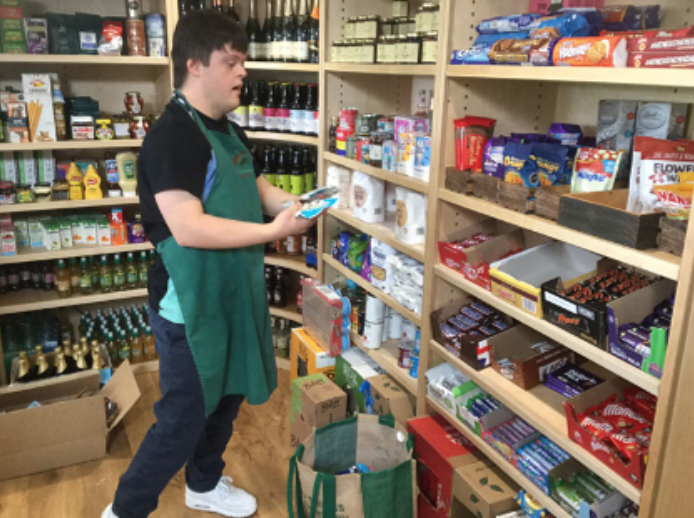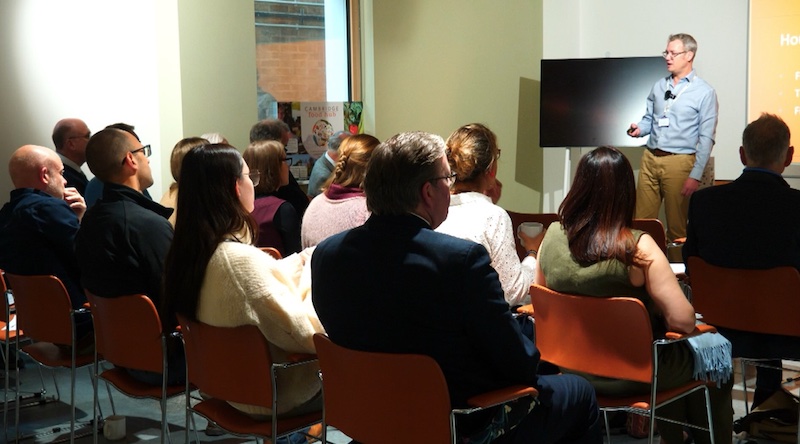In this blog we explore the different forms food hubs can take and the aspects to consider when choosing which food hub model aligns with your needs.

The Procurement for Good project supports four food hubs - Cambridge Food Hub and the Better Food Shed at Growing Communities in England, Galloway Food Hub in Scotland and Cultivate Food Hub in Wales - on their journey to partner with public sector buyers in supplying sustainably produced food to schools, hospitals or other public sector institutions.
In part one of our inquiry, we shed light on what a food hub is. In this blog, we explore diverse food hub models.
Since the Open Food Network (OFN) was set up in 2015 as a networked e-commerce for fairer food systems, we have seen hundreds of food hubs make use of the OFN digital platform……and no two are the same - although they all bring together produce from various sources and make it available to shoppers and buyers on a single online shopfront.
So let’s look at some of the variations:
Producer hub
These hubs often grow organically; starting with a single producer selling only their own products to shoppers and buyers. Then other local producers are added to the shopfront - usually with the hub host adding a mark-up to the selling prices set by the incoming producers. The mark-up often varies from producer to producer depending on how much work the hub manager has to do for the incoming producers in terms of updating product lists, collecting produce, managing social media, etc.
As more and more producers add their products to the hub shopfront, the viability of the hub increases because there is a wider range of produce available and average basket size increases, providing economies of scale for the hub.

Community hub
If there is not a lead producer, community entrepreneurs often set up a hub that does not itself have any products - although some hubs later develop their own merchandise which they add to the shopfront. There is also OFN merch available to all hubs.
In the early stages of a new hub, the organisers often need to do some work approaching local producers and inviting them to join the hub. In some cases these producers are keen to be involved and happy to do the administration of setting up their enterprise on the online platform and adding their product details. However some producers need the hub organisers to do this work for them. Hub managers can cover the cost of this extra work by adding a higher mark-up to the products of these producers.

School hub
Some of these hubs are organised by parent-teacher associations, others as a school project run by the older classes of secondary schools and sixth form colleges. In most cases any surplus made by the hub contributes to school funds.
If the students are involved in running the hub there are multiple learning opportunities around IT, marketing, social media, website design, financial planning and management.
One of the benefits of these hubs is that the parent base is a ready market for the hub and can also provide transport of produce and often pick up points that extend the geographical reach of the hub.
More details on school hubs here.

Shop hub
These hubs are often set up to supplement the sales of a village or community shop. These shops often have a relatively low footfall and perishable items such as vegetables do not sell quickly enough to justify stocking a wide range. Also shelf space for ambient products can be limited simply by the physical size of the retail space.
By setting up an online shop hub the shop manager can offer a wide range of locally-produced vegetables and fruit. These products can be ordered and paid for online and then automatic purchase orders sent to the producers on a regular basis. The producers then harvest exactly what has been ordered and deliver it to the shop at the agreed intervals. Shoppers then collect the produce from the shop - often making impulse purchases from the shop as they pick up their orders.
Shop hubs can also offer online a wide range of ambient products that can be stored elsewhere and do not need to take up shelf space.

Farmers’ market hub
Traditional face-to-face farmers’ markets can encounter multiple challenges:
- There is often limited space for stalls so not all local producers can have a stall
- Some markets do not run every week and shoppers prefer more regularity
- Some local producers do not have sufficient produce available to justify a stall
- Producers often find that the time commitment needed to staff a stall can be off-putting
- Some shoppers are not able or prefer not to visit the market in person either due to access or availability
An online shopfront can supplement a traditional farmers market by;
- Being available every week - even if the face to face market is not weekly
- Providing a shopfront for ALL producers - even those who are not able or willing to be present at every market
- Providing shoppers with the option to place an order in advance and have the produce picked and packed and ready either for collection from the market or delivery to their homes or a local pick up point
- Extending the geographical reach of the market. This is due to the fact that all the producers who have visited the market have capacity in their vehicles on the return trip. This space can be used to take pre-ordered online orders back to pick up points in a radius around the market. Producers have the option to make a charge for this service.

Food co-op or buying group
These hubs have a relationship with one or more local wholesalers. They buy products in bulk at wholesale prices and then divide the produce up into smaller quantities for their members.
Some of these hubs will hold stock of ambient products that can then be ordered by members over time. Some hubs will make the bulk-buying options available to members who can store the produce at their own homes.
More details on these hubs here.

Aspects to consider
In reality each new hub will draw from several of the above options - often visiting working examples and pulling together elements from several successful models to meet their needs. The choice of food hub needs to be carefully customised to the local situation. Here are some of the questions that need to be considered;
- Who are the producers locally who would be interested in selling through a hub?
- Could any one (or more) of these producers be the host of the hub?
- If not then where will the hub be based? Consider school halls, community centres, village halls. What rent will you need to pay to use this space?
- Is there a farmers’ market locally and if so, how can this be integrated into the operations of the hub?
- Ditto - farm shops, local shops, convenience stores, food banks, food co-ops, buying groups, etc
- Who are the shoppers - what are their interests and needs?
- Who are the buyers - include cafes, pubs, restaurants, schools, hospitals, care homes, local authorities, etc. What are their interests and needs?
- Where are potential pick up points? Consider cafes, pubs, schools, farm buildings. Do these pick up points need to charge for this service?
ADDITIONAL RESOURCES
Read part one of our inquiry into food hubs: What is a food hub?
See case studies of OFN hubs and this video for a deeper insight into one of the first hubs set up on the OFN back in 2015.
Check our Food Hub Diaries for updates on the PFG hubs’ journey to accessing public sector markets in their region.
Latest news




